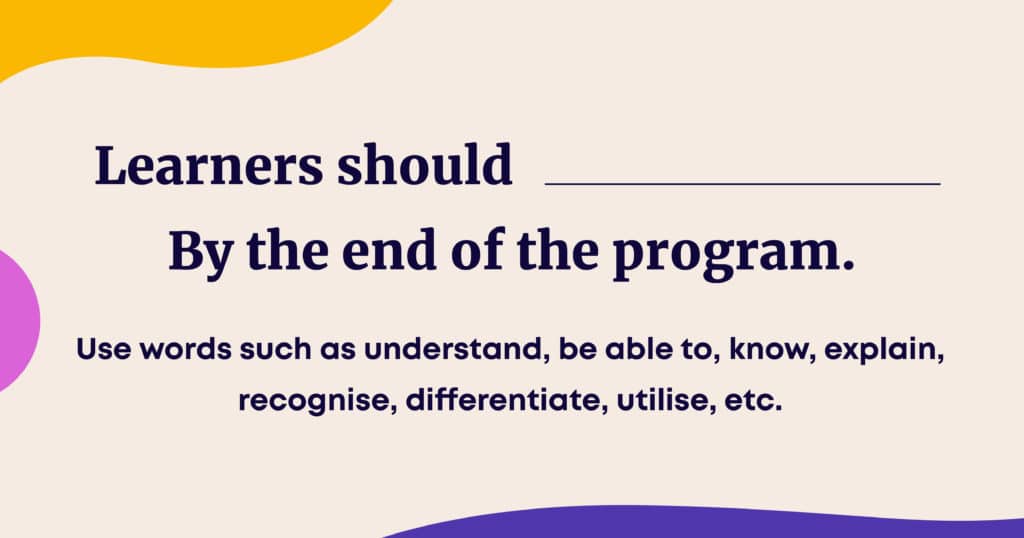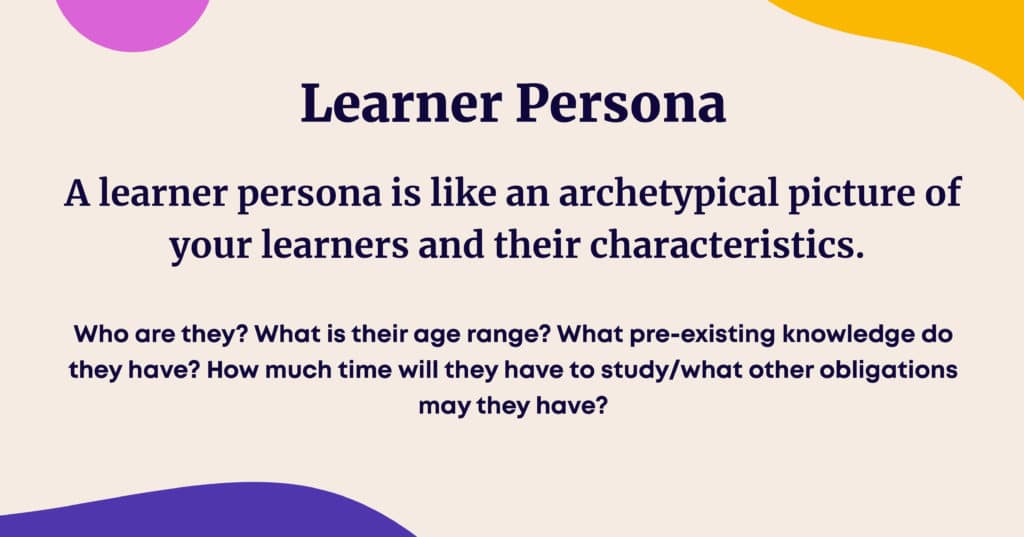“Have you ever been in a conversation with your friends, and they say something, but you have no idea what they are talking about, so you just nod along?”
If you are an avid fan of the tv show friends as I am, you’ll remember this scene from “the one where Joey buys an encyclopaedia.” (Not the official title of the episode). Entering a new field of knowledge or working in a new field can often feel like that. You hear the words and see the understanding in everyone else’s eyes, so you just go along with it. Understanding online learning and the accompanying pedagogical concepts can be like that for many training and HR managers tasked with running Learning and Development or even just employee onboarding.
This blog post will explore five commonly used concepts in online learning design and why they matter in creating effective online learning programs.
But first, what is Learning Design?
The term “learning design” was coined by Dr David Kolb in his book Experiential Education. He defined it as a process of designing learning activities for specific purposes based on an understanding of learners’ needs and interests. The goal can be any one or more of these:
- To develop skills
- To increase knowledge
- To change attitudes
- To create new understandings
- To build confidence
- To motivate learners
- To inspire them
- To challenge their thinking
- To encourage reflection
- To help them make decisions
Learning design has been widely adopted since then. In this article, we will focus specifically on its use within online learning environments. Learning design is all about designing effective ways to help your learners, whoever they are, employees, external sales team to achieve specific goals through engaging experiences. The core idea behind learning design is simple: If you want your learners to succeed, give them opportunities to practice skills and concepts until those skills become second nature.
Learning Goal
Simply put, a learning goal is the desired outcome of a learning experience; what learners will know, be able to do, or understand upon completion of a learning program. They should be clear, simple and expressed in a sentence or two. When designing a learning program, these statements act as your north star – all the materials, exercise, tests, and activities should relate to and contribute to reaching the learning goals. It’s a good idea to write these out at the start of the process, checking back with them and regularly reflecting on if and how your content is working towards them.
Be mindful not to get too carried away and pack too much into a program 2-4 learning goals is plenty for almost any program. An easy way of doing this is to create a document (or better yet, use CLANED’s backwards design tool) in which you write out your 2-4 learning goals for your program as simple sentences.

Pedagogical Script
A pedagogical script might be an intimidating term, but it is a critical tool for thinking about your course content and how to organise it. A pedagogical script outlines the various stages and the aims of each piece of content related to a specific topic. They can be adapted and applied broadly to an entire course or focused on a particular topic or module. Regardless the general idea is to think of the information delivery and learning like a story. It begins with an introduction, introduces and builds the main characters, delves deeply into what happens to them, and concludes with resolution.
In the context of online learning design, this follows something like activating interest, focus the attention, deepen knowledge and understanding, apply that learning and test or evaluate the degree to which it was understood. If we think about a module or single topic within a course, each content piece within that module can fulfil one of these functions.
A pedagogical script creates a “flow” within the course, meaning that learners find it easy and comfortable to move through their content and are not intimidated as they might be if the first thing is a complex and detailed piece of content.

Consider the example of learning to draw people; it wouldn’t make sense to start with detailed shading and would probably be very difficult for someone with no previous experience. Instead, it would make sense to start with learning the basics like how to proportion a body and block in the general shapes. The same is true for a learning program. Start with the basics and build up from there. A pedagogical script will guide and help you plan out the various materials; their purpose/contribution to constructing knowledge and understanding. Creating a pedagogical script is a critical step in planning a learning program.
Learner Persona
A learner persona is like an archetypical picture of your learners and their characteristics. Who are they? What is their age range? What pre-existing knowledge do they have? How much time will they have to study/what other obligations may they have?

If you come from a business or marketing background, these are remarkably similar to something like a client profile or buyer persona, and in some ways, it is. Like learning goals, this should be considered and created during the early planning stages of any course. Doing so helps keep the program learner-focused and can influence decisions and choices about the program, from how the materials are delivered, timelines, deadlines, and expectations.
Having a clear sense of who your learners are will help you design a program that fits their needs, abilities, and available resources. If, for example, you know your course will include many learners from rural or remote communities where bandwidth may be lower, including several long videos may not be the right choice and lead to frustration on the part of the learners. On the other hand, if your course will run at a university where the students will likely have personal laptops and high-speed internet, you may want to include more multi-media material to help keep them excited and engaged.
At the core of things, learning should relate to the learners’ experience as much as possible, this keeps it relevant to them, and they will be more motivated and engaged with the content. We know from research that learners who feel engaged during their time spent studying are much more likely to succeed than those who don’t. Creating a learner persona will help you to craft your materials accordingly and ensure a learning centric online learning design
Flipped Classroom

A flipped classroom is a model that embraces technology, learner-centric organisation, and a modern view of the learning process. You can contrast it against the more traditional “sage on a stage” model of education where a teacher or instructor represents the “sage” or expert and lectures the information to the learners.
In a Flipped model, learners get all the resources and materials about a topic ahead and are expected to work through that information independently. Then during the “lecture” or group session, the learners discuss debate and raise questions related to it with the instructor acting as guide and facilitator in this process. This model of learning is extremely well suited to online learning in general. The evidence shows that it motivates students by giving them a sense of responsibility for learning and empowers them to take an active role in the course.
Why is this format well suited to online learning? In general, during online learning, learners study material asynchronously; these courses often include live or virtual meet-ups with the entire class. It makes sense to use this time to expand on, discuss, and clarify the materials studied before the live session, rather than go through a zoom death by slides.
Social Learning
Social learning comes out of the work of psychologist Albert Bandura. As a theory, it posits that learning is a cognitive process that takes place in social contexts, relying heavily on observation. In more simple terms, this means that people rely on interactions with others when learning for the learning to be successful. It’s essentially idea-sharing. Think of a time you successfully solved a challenging problem (either with a team or individually); the odds are that you didn’t just sit alone thinking and arrive at a solution. You probably looked at examples of how others solved similar problems somewhere along the way, striking upon an idea that you could then develop on. Or, in a team-based setting, someone eventually suggests something that could work, others seize upon it, adding other elements, and collectively you arrive at a solution. Both of these scenarios are examples of social learning.

So, when we talk or think about creating online learning programs that promote and encourage social learning, we must (especially in online learning design) create spaces and opportunities for these types of occurrences to take place. Learner lead activities and discussions are one possibility; encouraging commenting and dialogue about the material is another; even peer evaluations can provide an avenue for social learning to occur.
That’s it from me for today on online learning design. Thanks for coming to my Ted talk. If you wish to learn more about online learning and online learning design, follow us on all social media, you’ll catch a video or blog post or some jazz infographics and memes.







